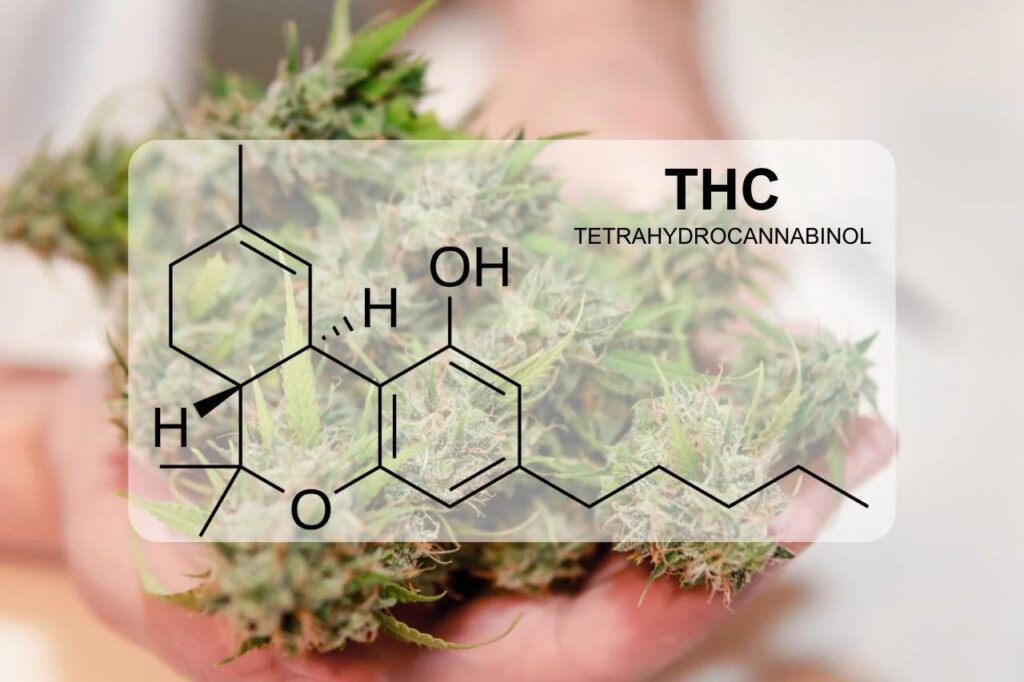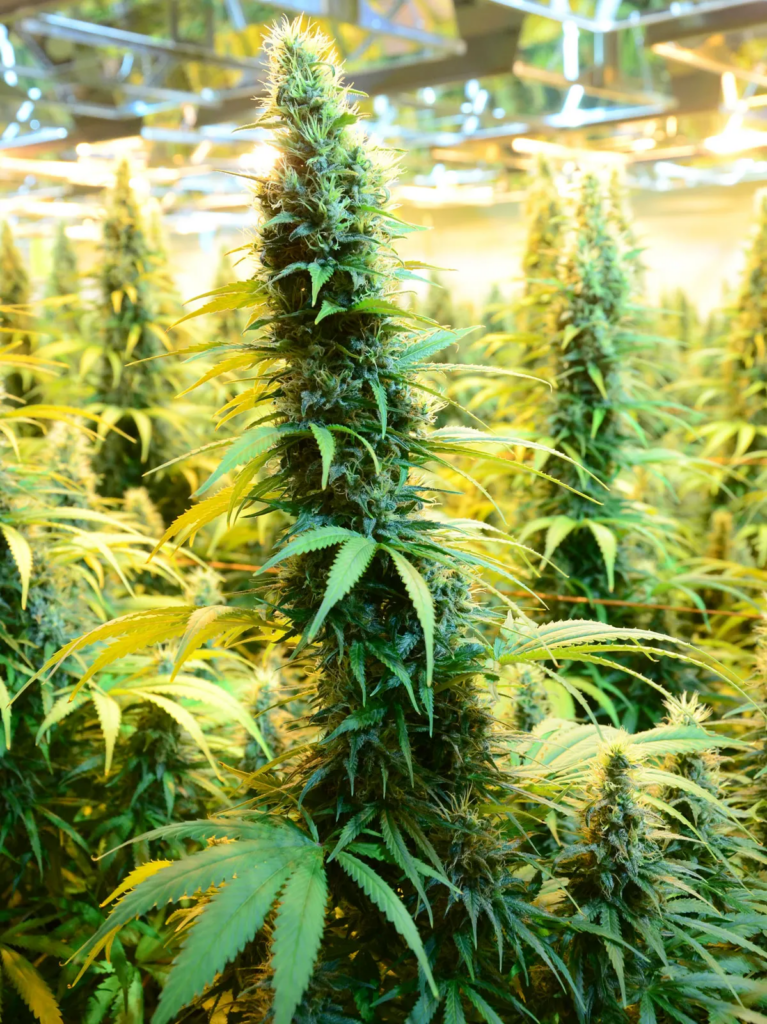- The process of creating a drug - May 23, 2023
- How do scientists model mental disorders in animals? - May 23, 2023
Introduction
Tetrahydrocannabinol (THC) CAS 1972-08-3 is the primary psychoactive compound found in the cannabis plant, specifically the species Cannabis sativa and Cannabis indica. Tetrahydrocannabinol belongs to a class of compounds known as cannabinoids, which interact with the body’s endocannabinoid system, a network of receptors and signaling molecules involved in a variety of physiological processes. Discovered in the 1960s by Israeli chemist Raphael Mechoulam, the identification and synthesis of tetrahydrocannabinol are noted in cannabis research.

Tetrahydrocannabinol is classified as a terpenophenol compound, having a tricyclic structure with hydroxyl and ether functional groups. It is primarily present in the cannabis plant in its acidic precursor form, tetrahydrocannabinolic acid, which is converted to tetrahydrocannabinol through decarboxylation. The psychoactive effects of tetrahydrocannabinol arise primarily from its interaction with cannabinoid receptors, particularly CB1 receptors in the brain. These receptors are part of the larger endocannabinoid system, which regulates processes such as mood, appetite, pain sensation, and memory. In addition, tetrahydrocannabinol has therapeutic effects such as analgesia, antiemetic effects, appetite stimulation, and muscle relaxation, making it a potential treatment for a variety of medical conditions.
Modern methods for isolating and synthesizing tetrahydrocannabinol, either from plant material or produced synthetically in the laboratory, allow the development of purified products. As cannabis use becomes increasingly legalized and normalized in various regions, properties, reactions, and uses of tetrahydrocannabinol is becoming increasingly important. This article reviews the chemical properties of tetrahydrocannabinol, its reactions, synthetic routes, health effects, and its wide range of uses.

Physical and Chemical Properties of Tetrahydrocannabinol
Tetrahydrocannabinol (THC) CAS 1972-08-3, the principal psychoactive component of cannabis, has a molecular formula of C₂₁H₃₀O₂ and a molar mass of 314.47 g/mol. Its chemical structure is defined by a tricyclic carbon system with hydroxyl and ether functional groups, which contribute to its reactivity. Tetrahydrocannabinol is a sticky, resinous compound that can crystallize at lower temperatures. It appears as a colorless oil or, in some cases, a pale yellow, solid crystalline material. The compound has boiling point 155–157 °C (311–315 °F) at 0.05 mm Hg. It is highly lipophilic, which means it is insoluble in water, and soluble in ethanol, hexane, butane, and acetone. Tetrahydrocannabinol is also known to be volatile, and its vaporization occurs at around 155°C to 220°C.
Chemically, tetrahydrocannabinol is relatively stable, but is prone to degradation when exposed to light, heat, and air. For example, prolonged exposure to oxygen results in the oxidation of tetrahydrocannabinol to cannabinol (CBN). The reactivity of tetrahydrocannabinol is largely due to its phenolic hydroxyl group, which can undergo esterification, methylation, and oxidation reactions. The most common isomer of tetrahydrocannabinol in nature is D-9-tetrahydrocannabinol, which refers to the double bond at the ninth carbon position in the cyclohexene ring. Another important isomer is D-8-tetrahydrocannabinol, which is more stable.
Pharmacologically, tetrahydrocannabinol is a highly lipophilic molecule, allowing it to easily cross the blood-brain barrier. This fat solubility also causes THC to bind to proteins such as serum albumin, which affects its distribution in the body. Its affinity for cannabinoid receptors, particularly the CB1 receptors in the central nervous system, is key to its psychoactive effects.
Synthesis of Tetrahydrocannabinol
The synthesis of tetrahydrocannabinol CAS 1972-08-3 from cannabidiol (CBD) and its extraction from cannabis plants are two main methods that enable the production of tetrahydrocannabinol for research, pharmaceutical, and commercial applications. Additionally, extracting tetrahydrocannabinol from cannabis plants remains the traditional and widely practiced method for obtaining tetrahydrocannabinol.
The synthesis of tetrahydrocannabinol from cannabidiol involves a chemical isomerization process in which the structure of cannabidiol is altered to form tetrahydrocannabinol, typically using an acid catalyst. Under acidic conditions and with heat (usually between 70°C and 80°C), cannabidiol isomerizes to form primarily D-8-tetrahydrocannabinol or D-9-tetrahydrocannabinol, depending on the reaction conditions. Cannabidiol is added to 95% ethanol and then placed in a hot water bath at 70°C. Once the cannabidiol has dissolved, glacial acetic acid is added to the solution. The mixture is refluxed for 24 hours in a water bath at 70°C. In this reaction detects D-9-tetrahydrocannabinol, D-7-tetrahydrocannabinol and D-11-tetrahydrocannabinol.

Cannabidiol for synthesis tetrahydrocannabinol can be synthesized from olivetol. In this method, olivetol is condensed with a terpene, such as 1-methyl-4-(prop-1-en-2-yl)cycloex-2-enol, in the presence of a strong acid catalyst.

Extraction of tetrahydrocannabinol from cannabis plants is a widely practiced method, especially for obtaining natural tetrahydrocannabinol extracts for medical or recreational use. The extraction process begins with cannabis plant material with high in tetrahydrocannabinol, and a solvent to dissolve and isolate the tetrahydrocannabinol and other cannabinoids. Common solvents include ethanol, supercritical carbon dioxide, and butane.
The cannabis plant material is soaked or washed with a chosen solvent, which dissolves the cannabinoids and other soluble compounds. The plant material can be fresh or dried, depending on the desired extraction profile. After soaking, the solution is filtered to separate the solid plant material from the liquid extract. The solvent is evaporated from the liquid extract, leaving behind a concentrated extract.

Synthetic conversion from cannabidiol and extraction from cannabis plants play essential roles in producing tetrahydrocannabinol, each with distinct methods and applications. Together, these methods offer consistency and versatility in the production of tetrahydrocannabinol

Chemical Reactions of Tetrahydrocannabinol
One of the most significant reactions involving tetrahydrocannabinol CAS 1972-08-3 is oxidation, where it converted to cannabinol (CBN) when exposed to light, heat, or oxygen. This degradation process is of particular interest for the storage of cannabis products. The conversion of tetrahydrocannabinol to cannabinol is accompanied by a reduction in psychoactive potency.

Tetrahydrocannabinol also reacts in esterification and methylation processes, particularly at its hydroxyl group. Esterification can modify tetrahydrocannabinol by reacting the hydroxyl group with carboxylic acids to form esters. In results, formation of tetrahydrocannabinol-O-acetate, a compound is more potent than tetrahydrocannabinol.
Dry tetrahydrocannabinol in an oven at 105℃ until thoroughly dry, dissolve extract into an alkane solvent, such as hexane, combine extract oil with acetic anhydride. Place solution in an ice and water bath and add 98% sulphuric acid. Once the solution has cooled, place a reflux condenser onto the top, heat for 60 min. After cool, add distilled water. Rinse the solution with sodium chloride and drain the organic layer, when place in an oil bath at 120℃ until completely dry or use a vacuum rotary evaporator with gentle water heating. Rinse and dry 2 more times with ethanol.

In addition, tetrahydrocannabinol can undergo isomerization reactions. The conversion of D9-tetrahydrocannabinol to D8-tetrahydrocannabinol, a structurally similar isomer with the double bond shifted from the ninth to the eighth carbon position in the cyclohexene ring. This isomerization can be induced under acidic conditions.


Applications of Tetrahydrocannabinol
Tetrahydrocannabinol CAS 1972-08-3 the psychoactive component of cannabis, has a wide range of uses, primarily in the fields of medicine, pharmacology and recreation. In medical contexts, tetrahydrocannabinol is most often used for its analgesic, antiemetic and appetite-stimulating properties. For example, tetrahydrocannabinol-based drugs such as Dronabinol and Nabilone are approved for the treatment of nausea and vomiting associated with chemotherapy. These drugs help patients tolerate cancer treatment by reducing their gastrointestinal discomfort. Moreover, tetrahydrocannabinol has been used to treat conditions such as glaucoma, where it reduces intraocular pressure, and multiple sclerosis, where it reduces muscle spasm and pain. In some cases, tetrahydrocannabinol is also used in combination with cannabidiol (CBD) in products such as Sativex, which is used to treat neuropathic pain and spasticity in patients with multiple sclerosis.
In addition to its medical uses, tetrahydrocannabinol plays an important role in the recreational cannabis market. Various forms of consumption have been developed to suit different preferences, including smoking, vaporizing, and edibles.
The potential of tetrahydrocannabinol for future therapeutic applications is being actively explored. New research suggests that tetrahydrocannabinol, especially when combined with other cannabinoids, may have neuroprotective and anti-inflammatory effects. There is also growing interest in the role of tetrahydrocannabinol in mental health, with ongoing research exploring its use in the treatment of post-traumatic stress disorder (PTSD), anxiety, and depression. Also, its use in palliative care, especially to relieve chronic pain and improve the quality of life of patients with terminal illnesses, highlights the importance of tetrahydrocannabinol in modern medicine.

Health Effects of Tetrahydrocannabinol
Tetrahydrocannabinol CAS 1972-08-3 has been the subject of extensive laboratory research of its physiological and health effects, particularly through its interactions with the endocannabinoid system.
Tetrahydrocannabinol acts primarily on CB1 receptors in the brain, which are involved in the regulation of mood, memory, pain, and motor control. Tetrahydrocannabinol can cause the release of neurotransmitters such as dopamine and serotonin, leading to its characteristic psychoactive effects, including euphoria, altered sensory perception, and relaxation. In animal models, high doses of tetrahydrocannabinol have been associated with short-term memory impairment, as activation of CB1 receptors disrupts the normal functioning of the hippocampus, a brain region critical for memory formation.
The effects of tetrahydrocannabinol on the immune system have also been studied. Tetrahydrocannabinol has been shown to reduce the production of pro-inflammatory cytokines, signaling molecules that cause inflammation, suggesting potential use in the treatment of inflammatory conditions. However, this immunosuppressant effect also raises concerns about increased susceptibility to infections, as tetrahydrocannabinol may impair the body’s ability to mount an effective immune response.
In the cardiovascular system, tetrahydrocannabinol has been shown to cause vasodilation, or widening of blood vessels, which may help lower blood pressure. However, high doses of tetrahydrocannabinol can also cause tachycardia (rapid heartbeat) and have been linked to arrhythmias (irregular heartbeat) in some people, especially those with existing heart disease.
Chronic exposure to tetrahydrocannabinol can lead to insulin resistance, which can increase the risk of developing metabolic disorders such as type 2 diabetes.

Safety Precautions
Working with tetrahydrocannabinol CAS 1972-08-3 in the laboratory requires strict safety precautions due to its psychoactive nature, potential exposure via inhalation, and the risks associated with working with volatile organic solvents commonly used in its extraction and synthesis. Basic safety precautions include the use of proper personal protective equipment (PPE), appropriate ventilation systems, and safe storage protocols.
The first safety precaution when working with tetrahydrocannabinol in the laboratory is the use of personal protective equipment (PPE) to minimize exposure. People should wear nitrile gloves, lab coats, and safety glasses to avoid skin and eye contact with tetrahydrocannabinol.
Safe Storage of Tetrahydrocannabinol and Related Chemicals. Temperature control is important to maintain the chemical integrity of tetrahydrocannabinol, as exposure to heat, light, and air can cause tetrahydrocannabinol to degrade into less potent compounds. Tetrahydrocannabinol should be stored in dark, airtight containers at cool temperatures to maintain stability.
Conclusion
Tetrahydrocannabinol CAS 1972-08-3 is a compound of significant scientific and medical interest, with a wide range of therapeutic potential and recreational uses, due to its psychoactive properties and its interaction with the body’s endocannabinoid system. It is usually obtained by extraction from plant material. The exploration of tetrahydrocannabinol’s properties, reactions, and applications is still evolving.
Bibliography
- Cannabidiol (CBD) Isomerization to Psychoactive Cannabinoids https://bbgate.com/en/threads/cannabidiol-cbd-isomerization-to-psychoactive-cannabinoids.359/
- Tetrahydrocannabinol-O-Acetate synthesis from tetrahydrocannabinol https://bbgate.com/en/threads/Tetrahydrocannabinol-o-acetate-synthesis-from-Tetrahydrocannabinol.669/
- Flemming, T., Muntendam, R., Steup, C., & Kayser, O. (2007). Chemistry and biological activity of tetrahydrocannabinol and its derivatives. Bioactive Heterocycles IV, 1-42. https://doi.org/10.1007/7081_2007_084
- Bloemendal, V. R., van Hest, J. C., & Rutjes, F. P. (2020). Synthetic pathways to tetrahydrocannabinol (tetrahydrocannabinol): an overview. Organic & Biomolecular Chemistry, 18(17), 3203-3215. https://pubs.rsc.org/en/content/articlehtml/2020/ob/d0ob00464b
- Abdel-Kader, M. S., Radwan, M. M., Metwaly, A. M., Eissa, I. H., Hazekamp, A., & ElSohly, M. A. (2024). Chemistry and pharmacology of delta-8-tetrahydrocannabinol. Molecules, 29(6), 1249. https://www.mdpi.com/1420-3049/29/6/1249?utm_campaign=releaseissue_moleculesutm_medium=emailutm_source=releaseissueutm_term=doilink119#

